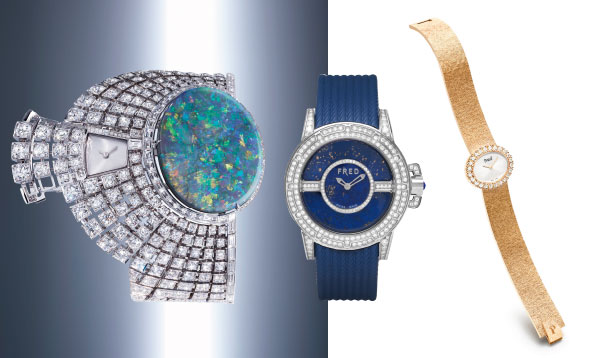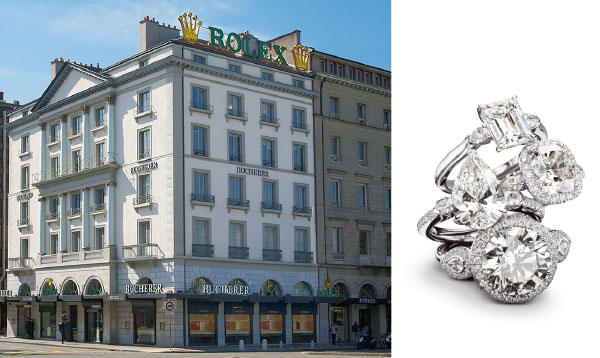
First and foremost, I was delighted to be participating once again in the GPHG, which has succeeded in winning over most of the major brands and must persevere in its approach. The watch industry is well advised to agree on a Grand Prix that is an undisputed benchmark, as the GPHG has indeed become. The setting of the Grand Théâtre de Genève is spectacular and one must salute the vision of its founders in selecting this venue back in the day. Both Federal and Cantonal authorities attend the ceremony that has acquired an international aura, and above all the composition of its jury gives it peerless legitimacy. The fact of having broadened the number of categories is also positive, making it possible to reward brands active in various areas of watchmaking. Piaget has shown considerable support for the GPHG in the past and must continue to do so. To answer your question, we were of course very happy, especially since the watches selected are highly representative of our DNA. We had not chosen to submit the most extensively gem-set models, but instead those most in tune with the current brand universe.
Which selection do you personally find most pleasing ?
Piaget is acknowledged for its driving role in the realm of thin watches and it is not surprising that the Altiplano should be so warmly received, but people did not perhaps expect us to make such a strong showing in the Artistic Crafts category, for which our Altiplano Scrimshaw has been selected. Piaget made a lot of such watches in the 1960s and 70s, and although our communication is not strongly geared in this direction, we have once again been involved in this field for several years now through the Art & Excellence collection. We generally exhibit them on occasions such as the Antiques & Arts Biennial in Paris, while combining them with jewelry creations. This collection comprises 38 watches in extremely limited or one-off series. While enamel has long since featured on our models, we have also developed bullino engraving, scrimshaw, micromosaic, embroidery and lacquer hand-crafted techniques by incorporating an ever wider range of skills.
What more could you wish for at the Grand Prix d’Horlogerie de Genève ?
The GPHG is now well structured, its jury is extremely representative and it works very well as it is. All Geneva-based brands should naturally now realise that they have a place within this competition. All film studios take part in the Oscars for example, even though only a few win awards. The GPHG sends positive industries about our industry, creates buzz, stirs public and media interest, all of which means that its effects benefit the entire industry.
Piaget is taking part for the sixth time in Only Watch : how important is this biennial event from your standpoint ?
Piaget has always been very active in the realm of charity work and we support many worthwhile projects in order to help them raise funds. For Piaget, this is a charitable activity and not a line of communication as is the case for many brands. Only Watch should in no way become a barometer for brand value. I don’t yet know what position Piaget will adopt at the close of this edition or whether we will need to adjust our strategy with regard to this issue.
What do you think of the fact that the SIHH has been broadened to include nine small independent brands ?
This move is in direct line from what has been done in the past : ever since its beginnings, the SIHH has welcomed and served as a springboard for brands such as Roger Dubuis and Franck Muller, so the new development is quite logical. As it so happens, these are brands that have achieved a degree of maturity and excellence that makes them truly high-quality competitors. Moreover, this also shows that the Fondation de la Haute Horlogerie enjoys a certain degree of independence in respect to Richemont, and that the group itself is concerned with ensuring the continuity of the profession.
Despite the uncertain economic situation, do you see any positive signs for the industry ?
Absolutely. While reading the financial press is incredibly depressing, I also note that most of the groups are still progressing, such as Richemont which announced a 16% rise over the first five months of the years in Euros, and 4% at constant exchange rates. Admittedly, the jewelry brands are coping better, since jewelry is developing faster than watches at the moment, and we are also seeing a change in behavioral patterns among customers who are more attentive to prices. This being said, there are still a number of highly complicated watches and Haute Joaillerie models being snapped up at extremely high prices. We are still seeing the creation of new wealth, notably in China. Geographically speaking, there are a number of changes and customers no longer necessarily make purchases in the same places, largely due to extensive travel. It’s up to us to capture their attention. The abundance of watch trade media and the new digital media helps us considerably in this regard, as do monobrand boutiques : customers these days are over-informed, yet this contributes to nurturing their appetite. Above all, the positive sign I see lies in the strength of the brands which are more solid and creative than they used to be. Our pioneering spirit in the domain of ultra-thin watchmaking no longer protects us from competition, just as the artistic crafts segment is no longer the exclusive preserve of Vacheron Constantin as was the case for many years. Today, brands are developing over a wide range of fields and competition is more intense than ever, which means we have to be more agile than ever, but the business is definitely there for the taking.






